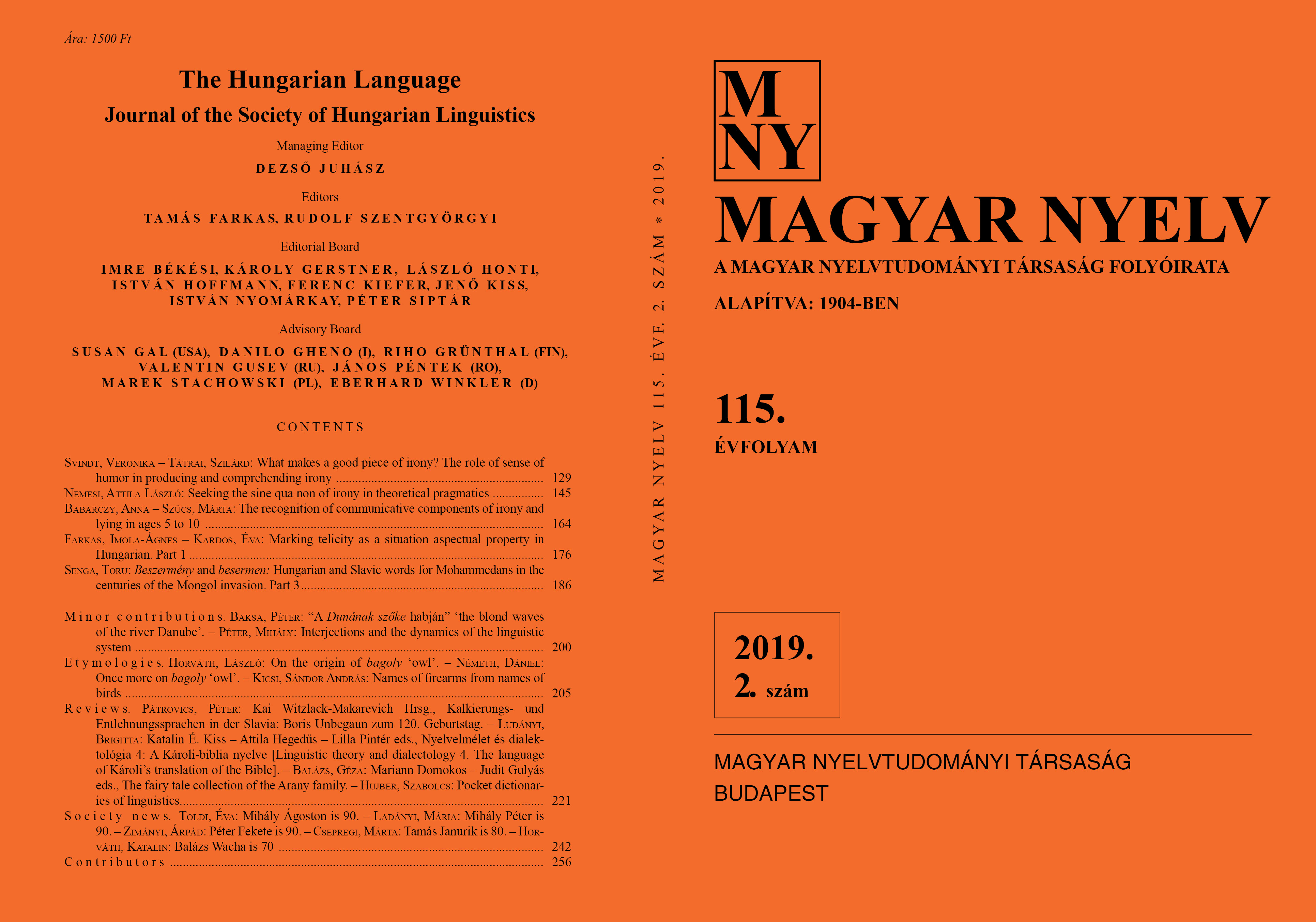The recognition of communicative components of irony and lying in ages 5 to 10
DOI:
https://doi.org/10.18349/MagyarNyelv.2019.2.164Keywords:
pragmatic development, irony comprehension, metapragmatic awareness, speaker intentionAbstract
In this paper, we investigate the recognition and assessment of speakers’ opinions, intentions, and attitudes with respect to utterances involving irony, lies, and literally true statements with 5 to 10-year-old children (nursery, first-form and third-form primary school children). The participants had to answer an opinion question, an intention question, and an attitude question in a multiple choice comprehension task based on a narrative. Their assessments were investigated in a binary (true/false) scale. While for nursery kids all three types of statements proved to be equally difficult, for third-formers they proved to be equally easy. Unexpectedly, first-formers were the least successful in recognizing lies as lies. There were three possible answers concerning the speaker’s intention: the speaker was kidding, he tried to put the listener off, or he meant what he had said. What the respondents found the most difficult was the recognition of the intention behind ironical satements: twe two younger groups performed at chance level, and even the oldest participants assessed the intention correctly in half of the cases only. The intention of misleading was somewhat easier to recognize for all three groups, and the literally true sentences proved to be the easiest to understand. The speaker’s attitude was measured against a five-point scale (from ‘nasty’ to ‘nice’). Irony and lying were not differentiated by any of the three groups, and all three groups assessed such speakers significantly nastier than those of literally true statements, although with ten-year-olds that difference was somewhat smaller than with the younger groups.
Downloads
Published
Issue
Section
License
Copyright (c) 2024 Anna Babarczy, Márta Zita Szücs

This work is licensed under a Creative Commons Attribution-NonCommercial-NoDerivatives 4.0 International License.
Magyar Nyelv is a Diamond Open Access periodical. Documents can be freely downloaded and duplicated in an electronic format, and can be used unchanged and with due reference to the original source. Such use must not serve commercial purposes. In the case of any form of dissemination and use, Hungarian Copyright Act LXXVI/1999 and related laws are to be observed. The electronic version of the journal is subject to the regulations of CC BY-NC-ND (Creative Commons – Attribution-NonCommercial-NoDerivatives).
The journal permits its authors, at no cost and without any temporal limitation, to make pre-print copies of their manuscripts publicly available via email or in their own homepage or that of their institution, or in either closed or free-for-all repositories of their institutions/universities, or other non-profit websites, in the form accepted by the journal editor for publication and even containing amendments on the basis of reviewers’ comments. When the authors publicize their papers in this manner, they have to warn their readers that the manuscript at hand is not the final published version of the work. Once the paper has been published in a printed or online form, the authors are allowed (and advised) to use that (post-print) version for the above purposes. In that case, they have to indicate the exact location and other data of the journal publication. The authors retain the copyright of their papers; however, in the case of an occasional secondary publication, the bibliographical data of the first publication have to be included.



